Our last post featured a tradition of beginning each new year with a visit to Delaplane Vineyards, and we continued another one this past weekend. Paul and I have attended the vertical Cabernet tasting at Breaux Vineyards for the past several years, and also tends to be the first wine event that we attend. This year’s vertical featured Cabernet Sauvignon from the driest growing season which was 2007 to the wettest, 2014. Exquisite food pairings with the vintage Cabernets made for a delicious afternoon.
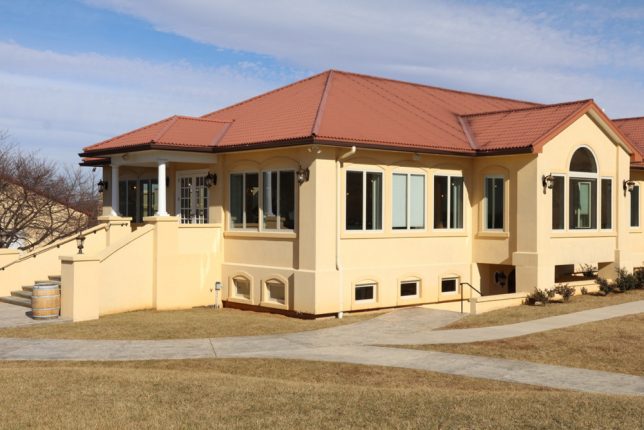
The event was held in the grand Acadia room with its scenic views of the vineyards. We were greeted with a glass of the 2016 Vieux Carre, an orange wine crafted from Viognier. Lookout for orange wines in Virginia; this is the second orange wine that we have experienced from Virginia. Both were produced from the Viognier grape with the orange tint due to extended soaking on the skins. Expect a tannic presence on the palate. It paired quite well with the amuse bouche, a scrod cake topped with garlic tarragon aioli.
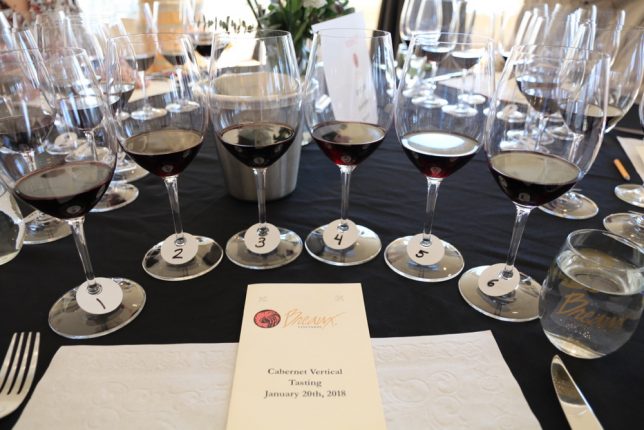
Cabernet Sauvignon was the featured star, and six vintages were presented for review. These included the 2007, 2008, 2010, 2012, 2013, and 2014. An added twist was that these Cabernets were the result of three different winemaking talents: Dave Collins, David Pagan Castano, and Heather Munden. Current winemaker Josh Gerard introduced the profiles to each wine and its respective vintage. So which vintage shined the brightest? In the end, it depended on the food pairing. My overall favorite was the 2012. It proved to be the most versatile; although it was paired with the second course, salmon topped with raw sugar and mustard salmon served atop white bean pepper ragout, it also played nicely with the third course, a tornedeau of beef over apple chestnut gnudi and apple cider vinegar. So we should pair chicken with white wine? Think again. The first course featured chicken thighs braised in peanut sauce. The 2012 played quite nicely with this dish too.
First Course
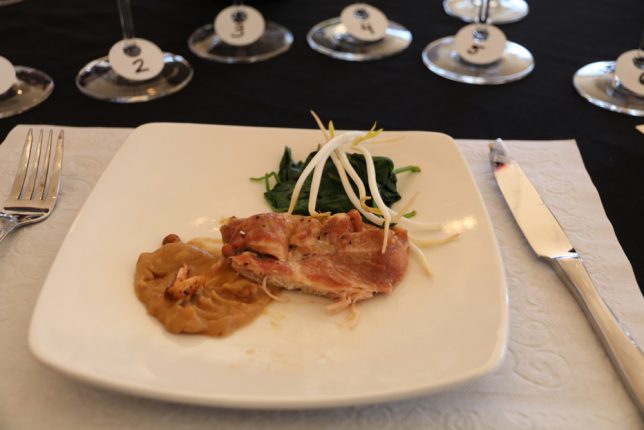
Second Course
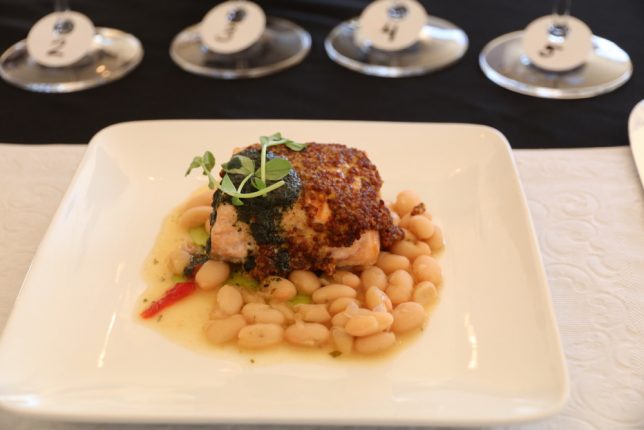
Third Course
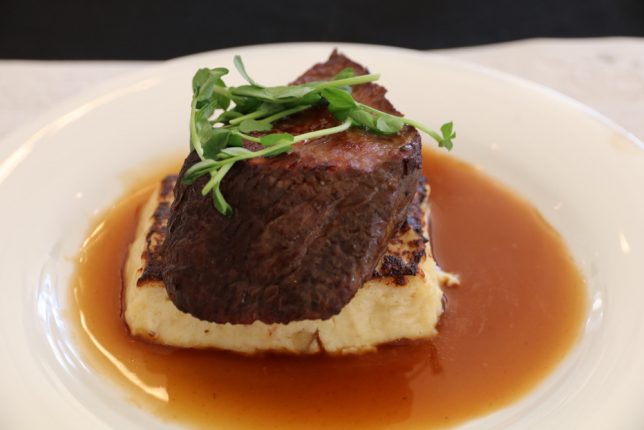
The 2007 as elder statesman was not to be ignored. It sang the right notes for its age—-soft cedar, sweet tobacco, and raising-like fruit. Quite nice on its own, it also paired well with the chicken course; however, the more savory 2008 vintage gave its older sibling a run for its money with this food pairing. The peanut sauce brought forward the ripe berry elements. The youngest kid on the block, the 2014, was produced from what was the wettest year of the vintages served; however, the rains came and went at the right time. Harvest time was dry and the fruit ripened right on cue to produce a more structured wine with dark berry aromas, cedar notes, and firmer tannins. This was most enjoyable with the beef course. Buy now but drink later; decant if you are not that patient.
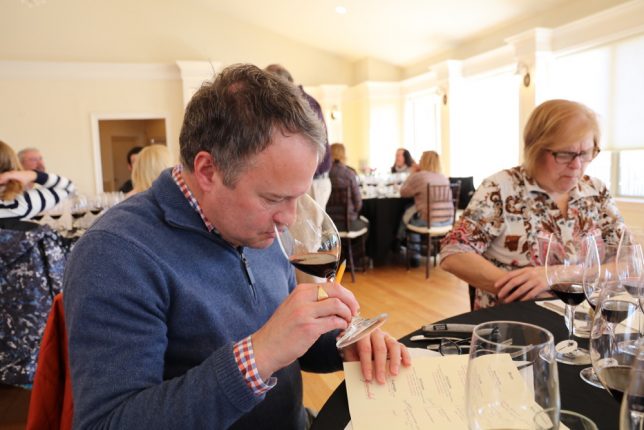
I was not surprised that the 2007 was at its apex; it was a dry year with little rainfall and dry conditions to harvest time. The 2010 growing season was indeed even hotter; for that reason, the red wines from this vintage still need time on the wine rack. I find them to be a bit tight still. Tasting the 2010 Cabernet Sauvignon in this lineup from Breaux Vineyards reinforced my hunch—-I enjoyed it with the salmon, a fattier dish that absorbed the higher alcohol and propelled forward the dark fruit elements of the wine. However, it is a gem that needs time to evolve further.
Some traditions are worth continuing, and this is certainly one of them. It is remarkable to us that we can discuss vintages in Virginia and decide whether to drink or hold. As we begin our 13th year as bloggers, we can attest that the quality Virginia wines can be found at those wineries that devote the time and effort into creating quality wines. Breaux Vineyards is one of those wineries. Please visit Breaux Vineyards to discover your own favorites, and be sure to mention that Virginia Wine Time sent you!